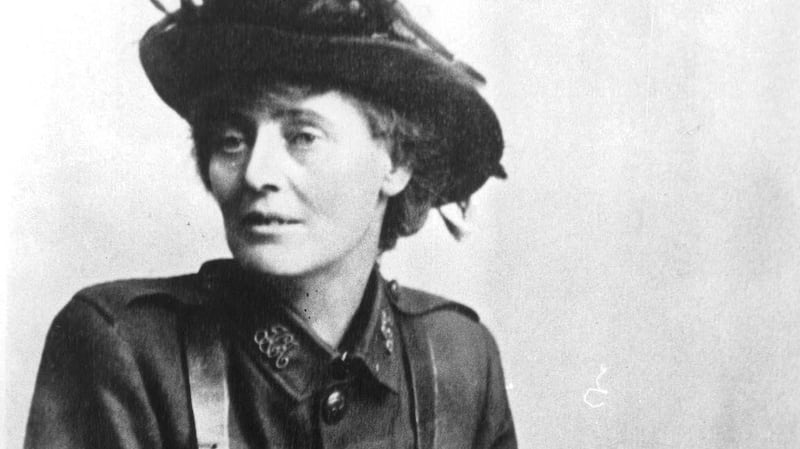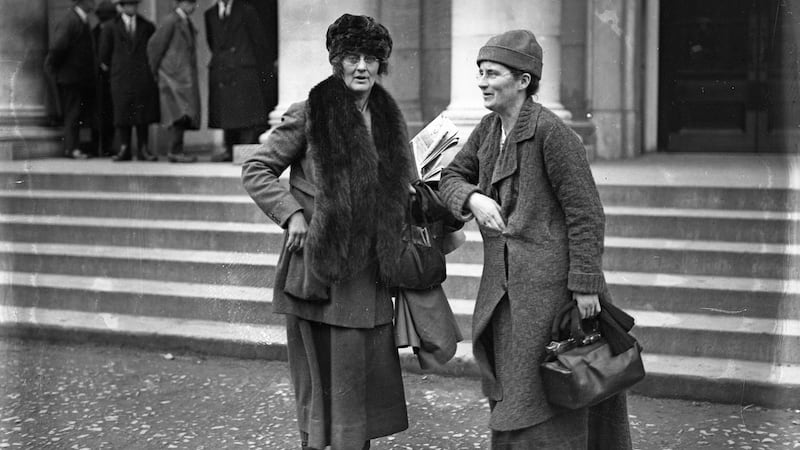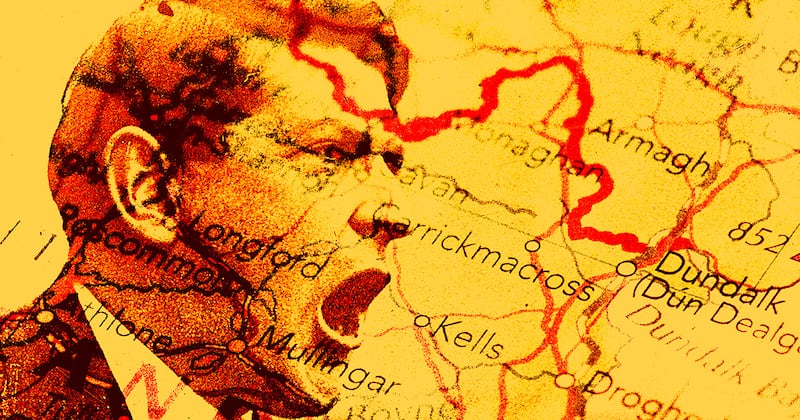The Anglo Irish Truce came into effect on July 11th, 1921. Its signing was a culmination of contacts between British government officials and Irish Republican leaders, beginning in the autumn of 1920.
By December 1920 Michael Collins said that there was "nearly a truce" but the hard line taken by the Chief Secretary of Ireland, Hamar Greenwood, who threatened to resign if there was a ceasefire before an IRA surrender, meant that this "had been made impossible".
What followed in the first seven months of 1921 was the bloodiest and most violent period of the war. However, contacts, sporadic and often difficult to sustain, did happen.



South African Prime Minister, Jan Smuts, made contact with Eamon de Valera, now returned from America, in early June 1921.
Although willing to negotiate, De Valera was insistent that there could be no unilateral surrender by the IRA prior to a truce. A number of exchanges between Lloyd George and De Valera in early July led to the declaration of a military truce between the Crown Forces and the IRA on July 11th.
Under the terms all pursuit of IRA “officers and men, or war materials or military stores” by Crown Forces was to end as were “attacks on Crown Forces and civilians” by the IRA.
When the details of the Truce were communicated to IRA Divisional Commands, IRA units and Cumann na mBan branches, many “men on the run” began to return home and activist women began to reassess their work.
By the time of the Truce, as Margaret Ward has written, the women were "experienced activists with a maturity of understanding, confident in their work and determined to ensure that the war would be won on their terms".
Hundreds of members of Cumann na mBan spent the previous years supporting the guerrilla campaign. They had also been a vital part of the running of the shadow State. They were, for example, appointed as judges in the Republican Courts. Women such as Kathleen Clarke, Maud Gonne McBride, and Hanna Sheehy Skeffington served as judges.
Many had also worked as propagandists for the Republic, helping produce and distribute the Bulletin, the official newspaper of Dáil Éireann, while senior activists such as Hanna Sheehy Skeffington and Mary MacSwiney among others, did Republican tours in America to promote the cause of the Irish Republic.
Women were also more engaged in local and national politics, fund raising and electioneering for Sinn Féin candidates, as well as running for election themselves.
In the local elections of 1920, 43 women were elected, while in the general election of 1921, six women Sinn Féin candidates were elected unopposed. These were Cumann na mBan president Countess Markievicz, Kathleen Clarke, Mary MacSwiney, Ada English, Margaret Pearse, and Kate O'Callaghan.
Like many in the IRA, members of Cumann na mBan were not convinced that the Truce represented a permanent cessation of violence, especially as it was unclear what the terms of any Treaty would be.
Preparations for resumption of violence, including participation in training camps around the country, were ongoing from July.
Cumann na mBan held their 1921 annual convention on the October 22nd/23rd.
Markievicz praised the vital work of the members during the War of Independence; “the men in the country tell me they never could have carried on without Cumann na mBan who did all sorts of work for them”.
The organisation was now in a strong position with over 800 branches and was, as many activists later noted in their memoirs, ready, if called on, to continue the war.
However, despite the central role of women in the War of Independence, no senior woman was sent to London in December 1921, as a plenipotentiary, to negotiate with the British Government.
Mary MacSwiney was, it seems, interested but was considered by De Valera and others to be too intransigent.
Cumann na mBan, which had reaffirmed its allegiance to the Republic proclaimed in 1916 at its 1921 convention, waited on the sidelines for the outcome of the negotiations.
When the terms of the Treaty became public there was real anger among many Republicans, women and men. As Dr Kathleen Lynn, on hearing of the terms, wrote in her diary, "Peace terms, but what a peace! Not what Connolly, and Malin and countless others died for".
Lynn's words reflect the thoughts of many Republican women. In a bitter split amid pleas from senior members such as Jennie Wyse Power to accept the Treaty as a stepping stone to a Republic, the majority of women in Cumann na mBan voted in February 1922 to reject the terms offered as did the six women TDs in the Dáil.
With the IRA also bitterly split on the Treaty, the scene was now set for a return to violence and a bloody Civil War, where former comrades, male and female, fought each other.
A majority of active Cumann na mBan members threw their militant energies behind the anti-Treaty cause, and would endure the trauma and anti-women legacies of this decision on into the Irish Free State.
Mary McAuliffe is Assistant Professor/Lecturer in Gender Studies at UCD, specialising in Irish women’s/gender history



















